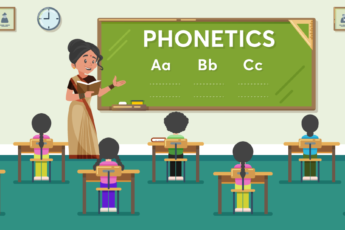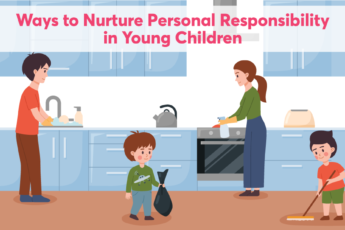Importance Of Dynamic Curriculum For Student Success
Education forms the bedrock of the success of individuals, societies, and nations. It is important to learn many skills, including thinking critically, solving problems, being creative and making wise decisions.
In the last decade, student success in academic and professional careers has become a key concern for educators, parents and employers. While schools have been quite successful in developing new curricula and educational practices, these have not been as effective as needed to raise student success rates. Schools are being challenged to develop 21st-century skills among students by preparing them for the ever-changing world of knowledge that is dynamic, international and high-tech.
The curriculum should address these needs of contemporary society by preparing students to be active collaborators for their own development and that of their communities. A dynamic curriculum incorporates core subjects and electives, but it also focuses on creating an environment where students can reach their full potential by exploring new ideas and concepts outside of the classroom.
A dynamic curriculum is one in which teachers use technology and other methods to bring their lessons to life. For example, rather than simply reading about historical events from textbooks or lecture notes, teachers may incorporate interactive video games or stories so students could learn while also having fun. This learning experience allows students with different learning styles to engage more actively in the lesson material, making it easier for them to retain what they’ve learned.
🖊️ The Growing Need for Dynamic Curriculum in Schools
Traditional education models focus on teaching students specific facts or concepts at fixed times throughout the year. While this approach works well for some subjects, it’s not enough for today’s students who need to know how to think critically about information and solve problems independently — skills that can’t be taught in isolation from one another or at specific times during the school year.
We often think of critical thinking or problem-solving skills as something you learn in college or graduate school, but it actually begins in high school — as early as middle school. So if you want your child to develop critical thinking skills early on, think about what they’re learning in math and science classes. For example, if they’re memorizing formulas and equations without understanding why they work or how they relate to each other, they will most likely forget after the exams.
Clearly, we need new approaches to education to develop these skills in students from an early age. A dynamic curriculum can help schools and teachers teach these new skills through blended learning experiences that integrate new technologies into classroom activities.
🖊️ Dynamic Curriculum is a More Effective Method of Learning
One of the biggest reasons a dynamic curriculum is so effective is that it allows students to learn at their own pace. For example, if a student is struggling with a particular subject or topic, they can repeat it as often as needed until they fully understand it before moving on to another concept or topic. This allows both teachers and students alike to spend less time repeating lessons.
This approach also benefits students diagnosed with learning disabilities or attention deficit hyperactivity disorder (ADHD). These students may find it challenging to perform well in traditional classrooms because they need extra time to process information, but with dynamic learning, they can go at their own pace without having to feel as though they are struggling behind everyone else.
The idea behind a dynamic curriculum is that each student learns differently. Some students may need more time to understand a concept than others, while others might need more repetition of certain concepts before fully understanding them. This is where a dynamic curriculum comes in handy because it allows teachers to cater their teaching style and lesson plans to each student’s needs.
🖊️ Dynamic Curriculum is Shaping Student Success
The dynamic curriculum is an ever-changing and evolving process that comes about as a result of the needs, interests and abilities of students. Dynamic lessons ensure that students remain engaged with the material they are learning because they are actively involved in class discussions and activities. This means they will be more likely to remember what they have learned during class when preparing for exams or assessments later in the year.
When students are engaged in their lessons, they tend to be more motivated about studying, which results in better grades and higher test scores when compared with those who have not been engaged by their teachers’ teaching styles. Such a tailored curriculum keeps students motivated because they feel they are participating in something meaningful that will help them succeed after leaving school.
A dynamic curriculum is beneficial because it allows students to move forward when they feel ready, not when the teacher thinks they are ready. Additionally, this also makes students feel confident and not guilty about even not understanding the material being taught. It also gives them time to develop confidence before moving on to more complex material in subsequent lessons or units on the same topic.
🖊️ The Bottom Line
In response to the increasingly global context of education and the need for a workforce that can address emerging challenges in the 21st century, many governments worldwide have initiated policies in favor of curricular reform and national educational standards. Therefore, NEP 2020 emphasizes that the school curriculum should be such that it promotes holistic, integrated development in an engaging and enjoyable manner.
To this extent, many teachers across the country have started using a combination of traditional and dynamic curriculum methods in their classrooms. Students are encouraged to participate in various learning activities like role-playing, games, poetry recitation, storytelling, drama and songs etc., which help students learn in a more creative way. These methods also allow learners to engage with other peers and their environment by collaborating and exploring new ideas through hands-on activities.
At Square Panda India, we help educators use the concept of differentiated instruction to make their lessons more effective for all students in their classrooms. We encourage schools, administrators and teachers to incorporate dynamic teaching strategies to help students understand and embrace change.




Leave a Comment